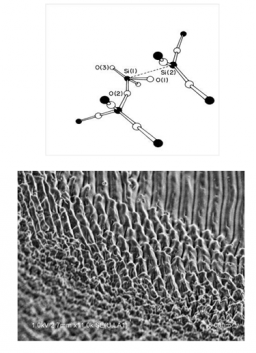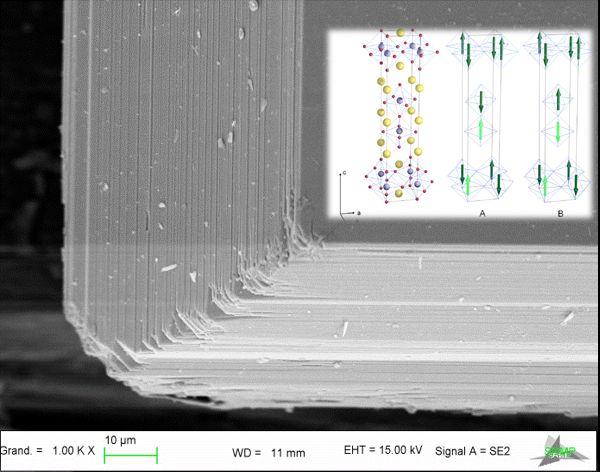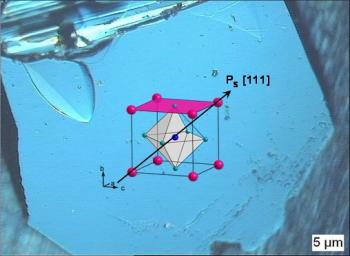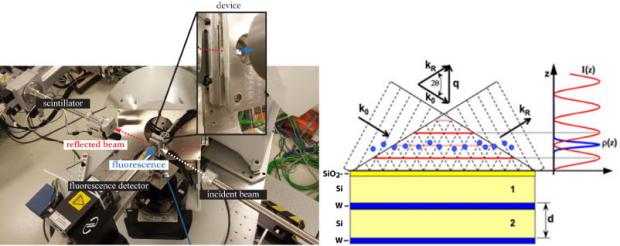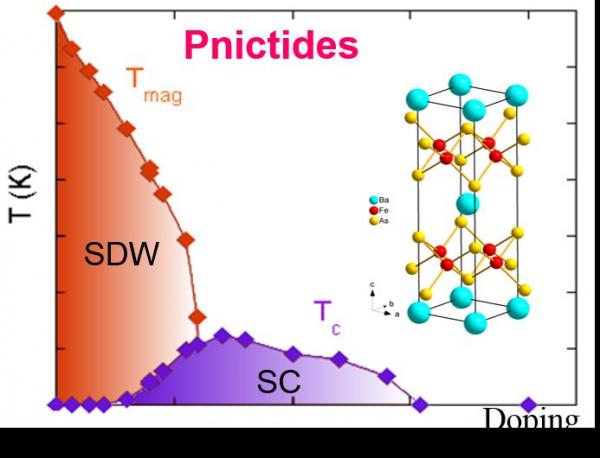2016
Solar energy conversion is today a fact. Traditionally dominated by crystalline silicone, new alternative technologies are emerging, in particular based on organic photovoltaics (OPV), hybrid solar cells (dye-sensitized solar cells) or new inorganic materials such as perovskites and nanomaterials. The efficiency of a photo-active material depends on the charge separation process that is itself largely dependent on the structural properties of the material. Charge carriers can be trapped and other competing non-radiative relaxation processes may decrease the efficiency. The initial processes preceding the charge separation are studied in DICO using time-resolved spectroscopy.
This topic is being developed in two directions :
2. Hybrid organic-inorganic structures
Dye Sensitized Solar Cells, also known as Grätzel cells, are very promising owing to their potential efficiency as well as being cheap. However, further improvements are necessary, particularly on the photocathode side. This requires a more detailed understanding of the molecular and electronic dynamics. To this purpose we have undertaken a study of the photophysics and the primary processes occurring after light absorption using femtosecond luminescence up-conversion (project funded by the CEA programme DSM Energy).
A PhD student, Valentin Maffeis, co-directed by Drs. Thomas Gustavsson and Bruno Jousselme (DRF/IRAMIS/NIMBE/LICSEN) is working on this subject (2015-2018).
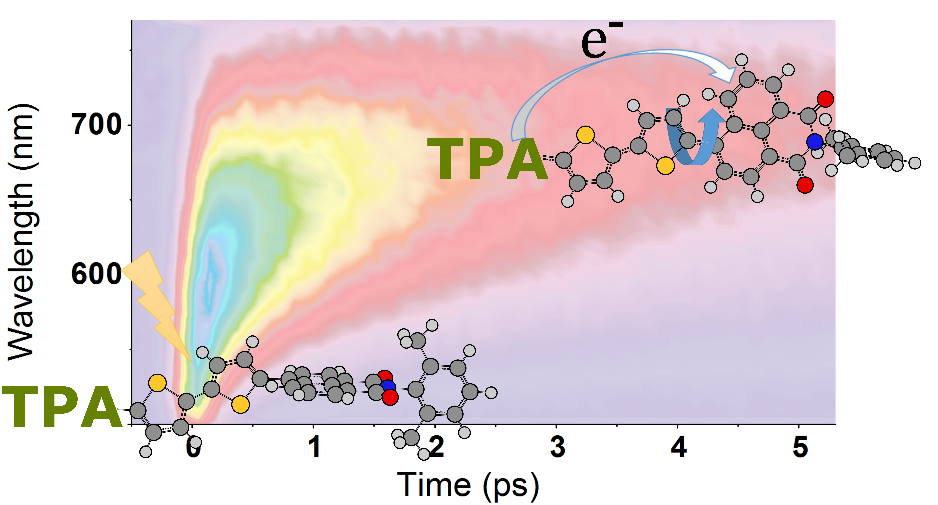
Figure 1. Time-resolved fluorescence spectra of a new push-pull type molecule I solution. The excited charge transfer state formed by light absorption is strongly stabilized by the polar environment. The charge separation (and ultimately, the charge injection) occurring in the excited state is in dynamic competition with the energy stabilization which leads towards a non-radiative internal conversion (leading to electron back transfer). It is therefore important to characterize the different processes involved in order to optimize the "wanted" reaction paths (charge separation) with regards to the "unwanted" reaction paths (internal conversion).
Hybrid organic-inorganic structures are a new class of materials that combine the advantages of organic and inorganic systems. Among these materials, hybrid perovskites are currently attracting an enormous interest. This new research program aims to examine in detail the ultrafast photophysical processes occurring in hybrid perovskites using the combination of femtosecond luminescence up-conversion and two-dimensional (2D) electronic spectroscopy. This project is supported by an ANR ACHN grant (2016-2019) coordinated by Elsa Cassette.
A PhD student, Carolina Villamil-Franco, co-directed by Drs. Thomas Gustavsson and Elsa Cassette is working on this subject (2017-2020).
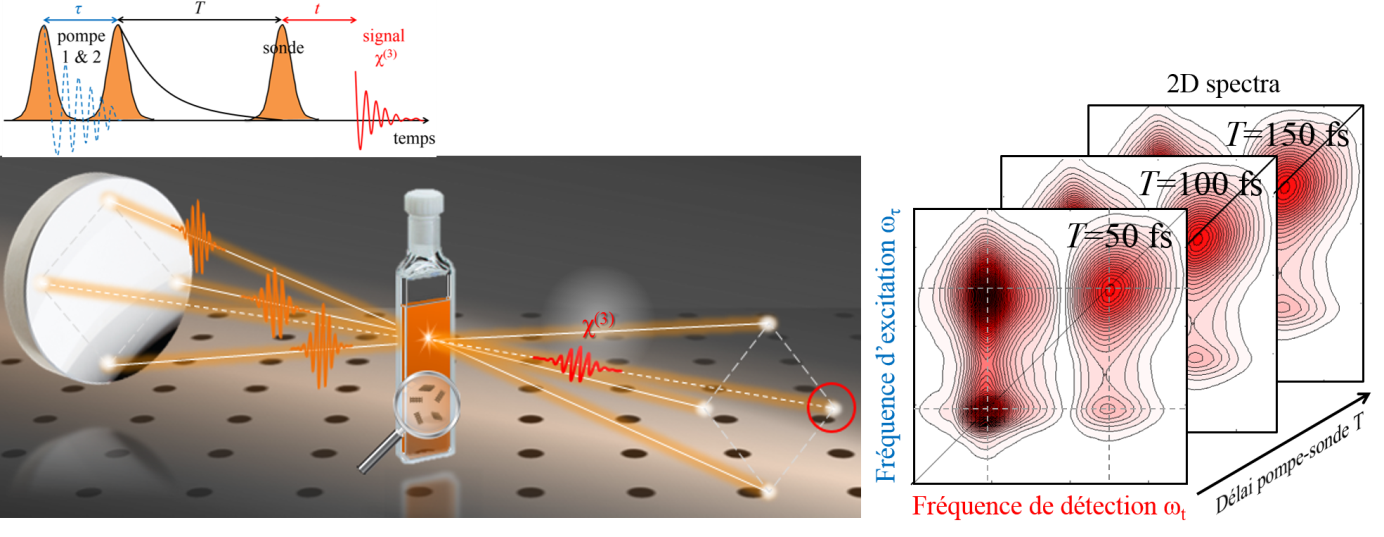
Figure 2. Principle and schematic view of a two-dimensional (2D) electronic spectroscopy measurement in the "boxcar" configuration. Also shown are typical "2D-plots" correlating the excitation and detection frequencies, showing the presence of off-diagonal coupling terms.
We study the excitation and relaxation processes in solids irradiated by intense ultrashort laser pulses. We focus our research on wide band gap dielectrics, either for their important applications in optics or electronics (SiO2, Al2O3, Diamant, MgO, CdWO4) or their fundamental interest (diamond, alkali halides…).
The physical mechanisms investigated range from point defect formation up to optical breakdown, passing through high excitation density effects like exciton-exciton interaction in scintillating materials.
Experimental approach : following the evolution of matter in real time
Lasers delivering ultrashort pulses are unique experimental tools to study solids, their advantage are twofold :
- generate a high and well defined excitation density in solids,
- allow time resolved experiments of pump-probe type using different diagnostics: interferometry, absorption, reflectivity, double pulse photoemission, and thus resolve the dynamics of excitation and relaxation processes.
The iridates (eg Sr2IrO4, Sr3Ir2O7 ...) have recently attracted the attention of the scientific community due to the presence of a strong spin-orbit coupling and strong electronic interactions that give rise to original physical properties as the high Tc superconductivity or the state of topological insulator. We explore in detail the impact of a strong spin-orbit coupling in these compounds by synthesizing single crystals with a method of self-flow and thin films by PLD technique and by studying the magnetic and transport properties of these oxides.
On these issues, the group has developed national and international collaborations in particular with: LPS-Orsay; Soleil; MPQ-Paris7; LLB-Saclay ;
Contact CEA-IRAMIS/SPEC : Dorothée Colson (SPEC/LNO)
Projects: SOCRATE (ANR 2015-2019)
Regarding multiferroic oxides, the group has developed very resistive crystals that have enabled to demonstrate, for the first time, the multiferroic character at room temperature of the BiFeO3 compound and determine a very high electric polarization value (P> 100 μC / cm 2 >> 25 μC / cm2, reference value of the barium titanate, ferroelectric BaTiO3). In collaboration, a coupling between magnetism and electric polarization at room temperature was highlighted as well as other properties quite amazing as the coupling between light and deformation etc... [cf. publications + faits marquants]… Because of these couplings, this type of multifunctional materials offer the ability to switch, under the action of an external signal of a particular kind (light, stress, external magnetic field or electric), property of different type of material (magnetization, electric polarization, deformation ...). All these couplings in the same material, opens the way to designing a wide variety of sensors with amazing potential applications.
On these issues, the group has developed national and international collaborations in particular with: LPS-Orsay; Soleil; MPQ-Paris7; LLB-Saclay ; UMR-Thalès-Palaiseau ; IPCMS Strasbourg…
Contact: Dorothée Colson
Background
The distribution of ions and charges at solid-water interfaces is of key importance in a number of phenomena and processes. In particular the development of micro- and nano-fluidics has strengthened the need for characterizing, understanding, modeling and controlling ion distributions in the electric double layer [1]. Indeed, surface driven transport phenomena such as electro-osmosis or electrophoresis are sensitive to charge distribution, and phenomena occurring within the diffuse Gouy-Chapman layer become dominant in determining flow properties as channel size, Debye length and slip length become on the same order of magnitude, leading to unusual phenomena [2]. With charged walls, channels can be filled with a unipolar solution of counter-ions, suggesting that the type and concentration of ions can be controlled by the surface charge density of the channel wall [3]. Here, specific effects (size, polarisability, hydration of the ions) could allow for even finer control over the ion type [4].
[1] L. Bocquet and E. Charlaix. Chemical Society Reviews, 39:1073–1095, 2010.
[2] Q.S. Pu, J.S. Yun, H. Temkin, and S.R. Liu. Nanoletters, 4:1099–1103, 2004.
[3] R. Karnik, R. Fan, M. Yue, D.Y. Li, P.D. Yang, and A Majumdar. Nanoletters, 5:943–948, 2005.
[4] Ion-specific anomalous electrokinetic effects in hydrophobic nanochannels,
D.-M. Huang, C. Cottin-Bizonne, C. Ybert, and L. Bocquet. Physical Review Letters, 98 (2007) 177801.
The iridates (eg Sr2IrO4, Sr3Ir2O7 ...) have recently attracted the attention of the scientific community due to the presence of a strong spin-orbit coupling and strong electronic interactions that give rise to original physical properties as the high Tc superconductivity or the state of topological insulator. We explore in detail the impact of a strong spin-orbit coupling in these compounds by synthesizing single crystals with a method of self-flow and thin films by PLD technique and by studying the magnetic and transport properties of these oxides.
On these issues, the group has developed national and international collaborations in particular with: LPS-Orsay; Soleil; MPQ-Paris7; LLB-Saclay ;
Contact CEA-IRAMIS/SPEC : Dorothée Colson (SPEC/LNO)
Projects: SOCRATE (ANR 2015-2019)
Superconductivity is a fascinating state of matter in which electric current flows without dissipation of energy. For thirty years, the search for high-temperature superconductors focused on cuprates, however, the origin of the pairing mechanism is not yet clear because of the high structural and electronic complexity of these materials. To study the properties of high Tc superconductors, the sample quality is a crucial element. One of the strengths of the group is to be able to implement various advanced techniques to synthesize ceramics or single crystals cuprates, including mercury cuprates of the highest Tc of (135K, or -138 ° C) at ambient pressure but also new iron pnictides. These pure or substituted compounds, including cuprates are actively elaborated and studied to capture the main features of the electron pairing mechanism.
On these issues, the group has developed national and international collaborations in particular with: LPS-Orsay; Soleil; MPQ-Paris7; ESPCI-Paris; LSI-Palaiseau; ESRF-Grenoble; Institut Néel-Grenoble; Université de Sherbrooke (Canada); IFW Dresden (Allemagne); Université de Victoria (Nouvelle Zélande)…
Contact: Dorothée Colson
Regarding multiferroic oxides, the group has developed very resistive crystals that have enabled to demonstrate, for the first time, the multiferroic character at room temperature of the BiFeO3 compound and determine a very high electric polarization value (P> 100 μC / cm 2 >> 25 μC / cm2, reference value of the barium titanate, ferroelectric BaTiO3). In collaboration, a coupling between magnetism and electric polarization at room temperature was highlighted as well as other properties quite amazing as the coupling between light and deformation etc... [cf. publications + faits marquants]… Because of these couplings, this type of multifunctional materials offer the ability to switch, under the action of an external signal of a particular kind (light, stress, external magnetic field or electric), property of different type of material (magnetization, electric polarization, deformation ...). All these couplings in the same material, opens the way to designing a wide variety of sensors with amazing potential applications.
On these issues, the group has developed national and international collaborations in particular with: LPS-Orsay; Soleil; MPQ-Paris7; LLB-Saclay ; UMR-Thalès-Palaiseau ; IPCMS Strasbourg…
Contact: Dorothée Colson
Background
The distribution of ions and charges at solid-water interfaces is of key importance in a number of phenomena and processes. In particular the development of micro- and nano-fluidics has strengthened the need for characterizing, understanding, modeling and controlling ion distributions in the electric double layer [1]. Indeed, surface driven transport phenomena such as electro-osmosis or electrophoresis are sensitive to charge distribution, and phenomena occurring within the diffuse Gouy-Chapman layer become dominant in determining flow properties as channel size, Debye length and slip length become on the same order of magnitude, leading to unusual phenomena [2]. With charged walls, channels can be filled with a unipolar solution of counter-ions, suggesting that the type and concentration of ions can be controlled by the surface charge density of the channel wall [3]. Here, specific effects (size, polarisability, hydration of the ions) could allow for even finer control over the ion type [4].
[1] L. Bocquet and E. Charlaix. Chemical Society Reviews, 39:1073–1095, 2010.
[2] Q.S. Pu, J.S. Yun, H. Temkin, and S.R. Liu. Nanoletters, 4:1099–1103, 2004.
[3] R. Karnik, R. Fan, M. Yue, D.Y. Li, P.D. Yang, and A Majumdar. Nanoletters, 5:943–948, 2005.
[4] Ion-specific anomalous electrokinetic effects in hydrophobic nanochannels,
D.-M. Huang, C. Cottin-Bizonne, C. Ybert, and L. Bocquet. Physical Review Letters, 98 (2007) 177801.
La protection et la conservation des objets du patrimoine culturel (archéologiques, musée, monuments, statuaire, …) est un enjeu sociétal majeur. Ceux-ci subissent des altérations dues aux interactions avec l’environnement. C’est tout particulièrement le cas des métaux (fer - acier, cuivres - bronzes, plomb, etc) qui se corrodent. Cette altération peut avoir lieu dès leur abandon mais également lors de leur exposition au public. La mise en place de traitements efficaces de restauration et de protection est alors cruciale. Or, ceux-ci ne peuvent être de simples transpositions de solutions utilisées dans l’industrie des traitements anticorrosion. En effet, il existe pour le patrimoine des exigences spécifiques de préservation de l’aspect des objets lors du traitement et de réversibilité des revêtements appliqués. De plus ces systèmes de long terme ont des spécificités physico-chimiques (hétérogénéité, réactivité,…). Ainsi, tant les traitements de restauration, que les revêtements de protection, doivent faire l’objet de recherches adaptées mettant en jeu des techniques de caractérisation multi-échelle et des tests représentatifs des conditions d’utilisation.
La société A-CORROS est spécialisée dans la mise en œuvre et le développement de ces traitements. Elle a mis au point un prototype unique en Europe, de déchloruration, étape essentielle de traitement des métaux archéologiques, par voie subcritique. Une fois opérationnel, ce protocole réduira de plusieurs ordres de grandeur les temps de traitements, avec des conséquences économiques majeures pour la restauration des objets archéologiques métalliques. Avant de passer à une phase d’exploitation commerciale, ce nouveau procédé nécessite cependant des recherches approfondies sur l’évolution de la structure et de la texture des produits de corrosion au cours du traitement afin d’en assurer la reproductibilité et la fiabilité.
Par ailleurs, A-CORROS, comme l’ensemble des acteurs du patrimoine, utilise un certain nombre de revêtements de protection qu’elle met en œuvre sur les objets de grandes dimensions exposés, notamment en plein air. Ces traitements, actuellement basés sur l’utilisation de cires microcristallines ou d’inhibiteurs de corrosion sont d’une efficacité limitée dans le temps. Ainsi, une action de R&D afin de comprendre les mécanismes d’action de ces composés et d’optimiser leur fonction de neutralisation des zones réactives au sein des produits de corrosion poreux tout en répondant aux critères du patrimoine serait cruciale en ce domaine.











